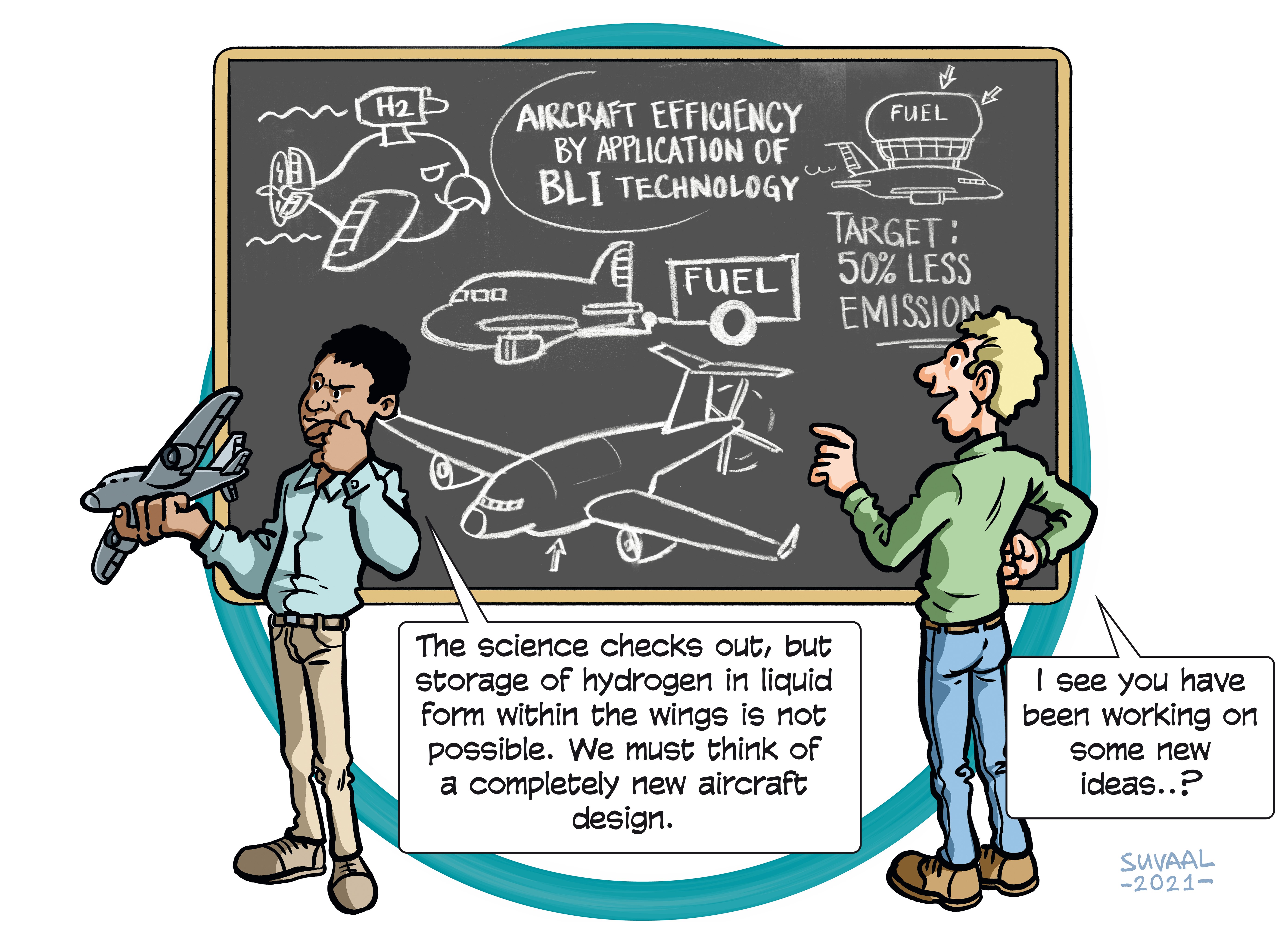Advanced Propulsion & Power Unit
Research Themes: Energy, Aerospace


A TRL is a measure to indicate the matureness of a developing technology. When an innovative idea is discovered it is often not directly suitable for application. Usually such novel idea is subjected to further experimentation, testing and prototyping before it can be implemented. The image below shows how to read TRL’s to categorise the innovative ideas.
Summary of the project
Current aircraft use kerosene for propulsion, a carbon-based fuel which is stored in the wings of the aircraft. When you would want to fly on hydrogen, storage in liquid form within the wings is not possible. To be able to store the hydrogen onboard, you would need to find space for that in the fuselage of the aircraft, thereby changing the shape, drag and other specifics of the aircraft. With the APPU project, the researchers try to design an aircraft that can carry and fly on both, some amount of hydrogen and some amount of kerosene. Such an aircraft is fit for the transition as not every airport around the world would have hydrogen available at the same time.
In the new design, the aircraft has a different configuration – including a fuselage tail mounted propeller - with a third engine that can burn the different types of fuels in its dual-fuel combustion chamber. This new type of engine and propeller configuration enhances the efficiency of the aircraft and also allows for steeper take offs and descends.
What's next?
The current configuration can store approximately 15 to 20% of the total energy in form of hydrogen, thereby reducing the aircraft emissions by around 25%. So for the next configuration, the researchers hope to bring increase the H2 % gradually to around 50 %, using the multi fuel combustor technology.
Contribution to the Energy transition?
Whereas small aircraft can be electrified, this solution is not scalable. So for bigger aircraftas used in civil aviation, an alternative has to be found. With the APPU project – introducing the possibility to fly on an energy mix - allows for a scalable, feasible, producible and economical aircraft that will use hydrogen in a synergistic way along with other innovative technologies and fuels. This will make the aircraft more efficient and will cut emissions significantly.
dr. A. Arvind Gangoli Rao
prof. dr. ir. Leo Veldhuis
dr. Ivan Langella
dr.ir. Tomas Sinnige
ir. Kaushal Dave
dr. Ferry Schrijer
dr. ir. Maurice Hoogreef
dr. Feijia Yin
Martijn van Sluijs MSc
prof. dr. ing. Georg Eitelberg
dr. ir. Roelof Vos
dr. Anexander Heidebrech
ir. Sarah Link
Faculties involved
- AE
